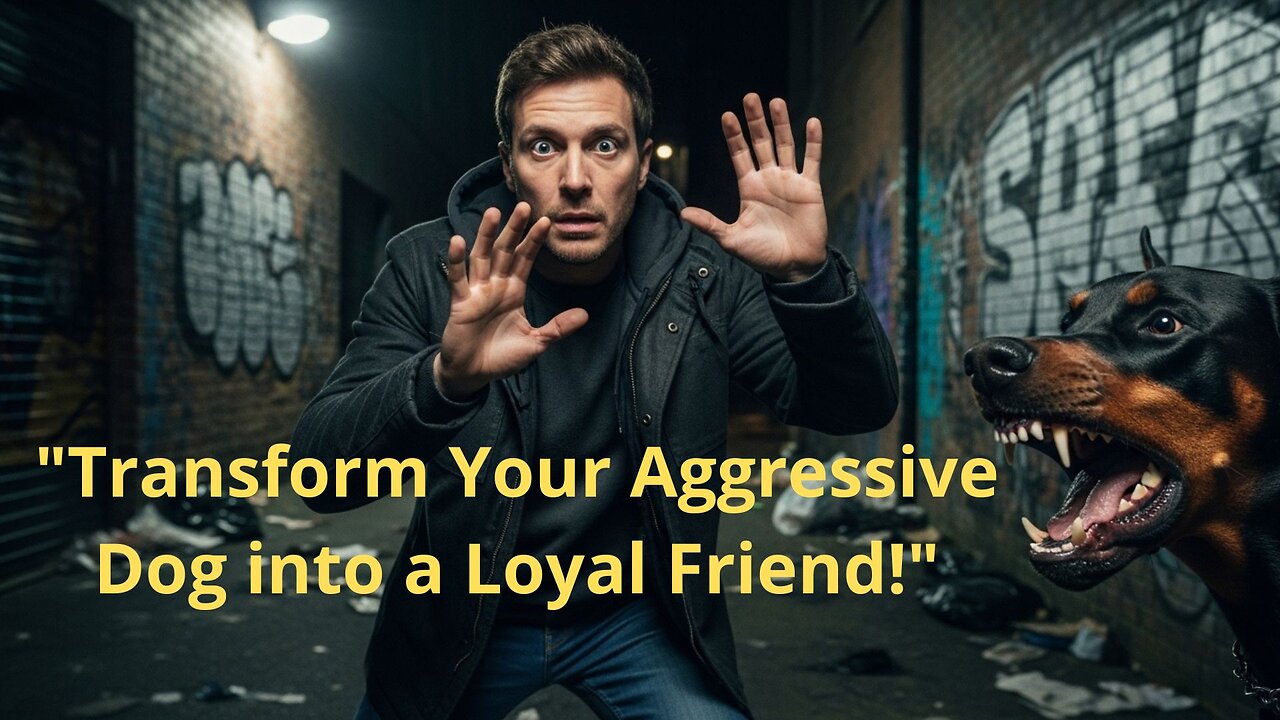Premium Only Content

How to deal with an aggressive dog?
How to deal with an aggressive dog?
Did you know that nearly 4 million people are bitten by dogs in the United States every year? That’s more than the number of people who go to the hospital for car accidents! If you've ever encountered an aggressive dog or know someone who has, you understand how scary that situation can be. But don’t worry, in this video, we’re going to unravel the mysteries behind aggressive dog behavior and, more importantly, how to handle it safely and effectively.
The first thing we need to understand is that canine aggression isn’t about bad character. In many cases, it’s a reaction to fears, pain, or even traumatic experiences. Imagine you have a toothache and someone tries to touch your mouth. You’d react aggressively, right? This applies to dogs too. They have their reasons, and understanding those reasons is the first step toward a solution.
Now, let’s talk about warning signs. A dog that feels threatened may show subtle signs before attacking. Be on the lookout for behaviors like growling, tensing up, and ears pinned back. These are early warnings that something is wrong. If you notice these signs, the best thing to do is stay calm and give the animal space. Don’t approach quickly, as this can escalate the situation.
One effective technique for dealing with aggressive dogs is the distraction method. For example, if you find yourself in a situation where a dog is growling at you, try to avert your gaze and, if possible, throw a toy or a treat to distract it. This can help break the focus of aggression and create an opportunity for you to safely distance yourself.
Now, if you are the owner of a dog that exhibits aggressive behaviors, the situation is a bit different. The first step is to consult a veterinarian. Sometimes, aggression can be caused by pain or illness. Once you ensure your dog is healthy, consider working with a trainer who specializes in canine behavior. They can help you understand the causes of aggression and implement training strategies.
And here’s a surprising tip: socialization is key! Dogs that are exposed to different people, environments, and other animals from a young age tend to be more balanced. If your dog is already an adult, it’s still possible to work on socialization, but do so carefully and gradually. Take your dog for walks in safe places where it can see and hear new experiences, always respecting its limits.
It’s also important to be a firm but gentle leader. Dogs need structure and leadership to feel secure. Use simple and consistent commands, always rewarding good behavior. Positive reinforcement in training builds trust and helps reduce aggression.
Now, you might be wondering: what if I encounter an aggressive dog on the street? The golden rule is: never run! This can trigger the dog’s hunting instinct. Stay calm, avoid direct eye contact, and if possible, back away slowly. If the dog approaches you, try to stand sideways and protect your face and neck with your arms. These postures signal that you are not a threat.
Finally, remember that patience is essential. Changing the behavior of an aggressive dog doesn’t happen overnight. Being consistent in your approaches and allowing time for change is crucial. With love, understanding, and the right strategies, it’s possible to transform an aggressive dog into a loyal and loving companion.
If you enjoyed this video, don’t forget to like, subscribe, and share it with your friends. Together, we can make the world a safer place for our four-legged friends!
-
 24:13
24:13
Jasmin Laine
7 hours agoPoilievre Can’t Stop LAUGHING—Liberals IMPLODE After U.S. Ambassador Calls Them Out
75811 -
 LIVE
LIVE
Mally_Mouse
5 days ago🎮 Throwback Thursday! Let's Play: Kingdom Hearts 1 pt. 4
507 watching -
 25:14
25:14
Stephen Gardner
2 hours agoCLINTONS PANIC AS ARREST CALLS EXPLODE – Scott Jennings GOES OFF! 😱
2.83K4 -
 LIVE
LIVE
megimu32
1 hour agoON THE SUBJECT: Throwback Thursday | Wheel of Nostalgia Chaos!
204 watching -
 LIVE
LIVE
Flyover Conservatives
21 hours agoTrojan Horse in the Big Apple? Prophetic Warning w/ Robin D. Bullock | FOC Show
1,697 watching -
 LIVE
LIVE
Precision Rifle Network
1 day agoS5E6 Guns & Grub - The Boys Are Back!
69 watching -
 LIVE
LIVE
SynthTrax & DJ Cheezus Livestreams
4 days agoLumines - Arise - DJ Cheezus Birthday Stream
95 watching -
 1:00:41
1:00:41
Glenn Greenwald
6 hours agoEXCLUSIVE: Succession Actress & Podcast Host Dasha Nekrasova Speaks Out About Hollywood Cancellation Over Fuentes Interview | SYSTEM UPDATE #549
99.2K69 -
 31:27
31:27
Robbi On The Record
8 hours ago $1.20 earnedWhat does the Bible say about Astrology? The Conversation Culture Has Been Avoiding | ft. JT Follows JC
9.95K4 -
 LIVE
LIVE
SOLTEKGG
1 hour ago🟢 Live: Pro Player Returns to Battlefield 6 RED SEC
54 watching